Hello everyone, hopefully right now I'm sitting on a beach, hiking through the jungle, or getting a massage in Hawaii. In the meantime, I've got some random but hopefully interesting posts for ya!

We received this juicer at the wedding shower that Mr. Hungry's work had for us. I was so excited to get it I could hardly wait to pull it out and get to juicing. I've long been a fan of making green smoothies and green juice since my friends Jenny and Amy, and I did Kris Carr's 21 days cleanse about a year and a half ago while we were in grad school.
The cleanse included one fasting day a week with green juice 4-5 times throughout the day and ending the day with a green smoothie or clean soup. For the green juice, we drank bottled Evolution juices. They taste delicious and are cold-pressed, never heated, so they keep optimal nutrients.
While cheaper ($3 a bottle at the grocery store) than buying fresh juice (usually $7-8 bucks a glass) they are nothing compared to freshly squeezed juice!!!
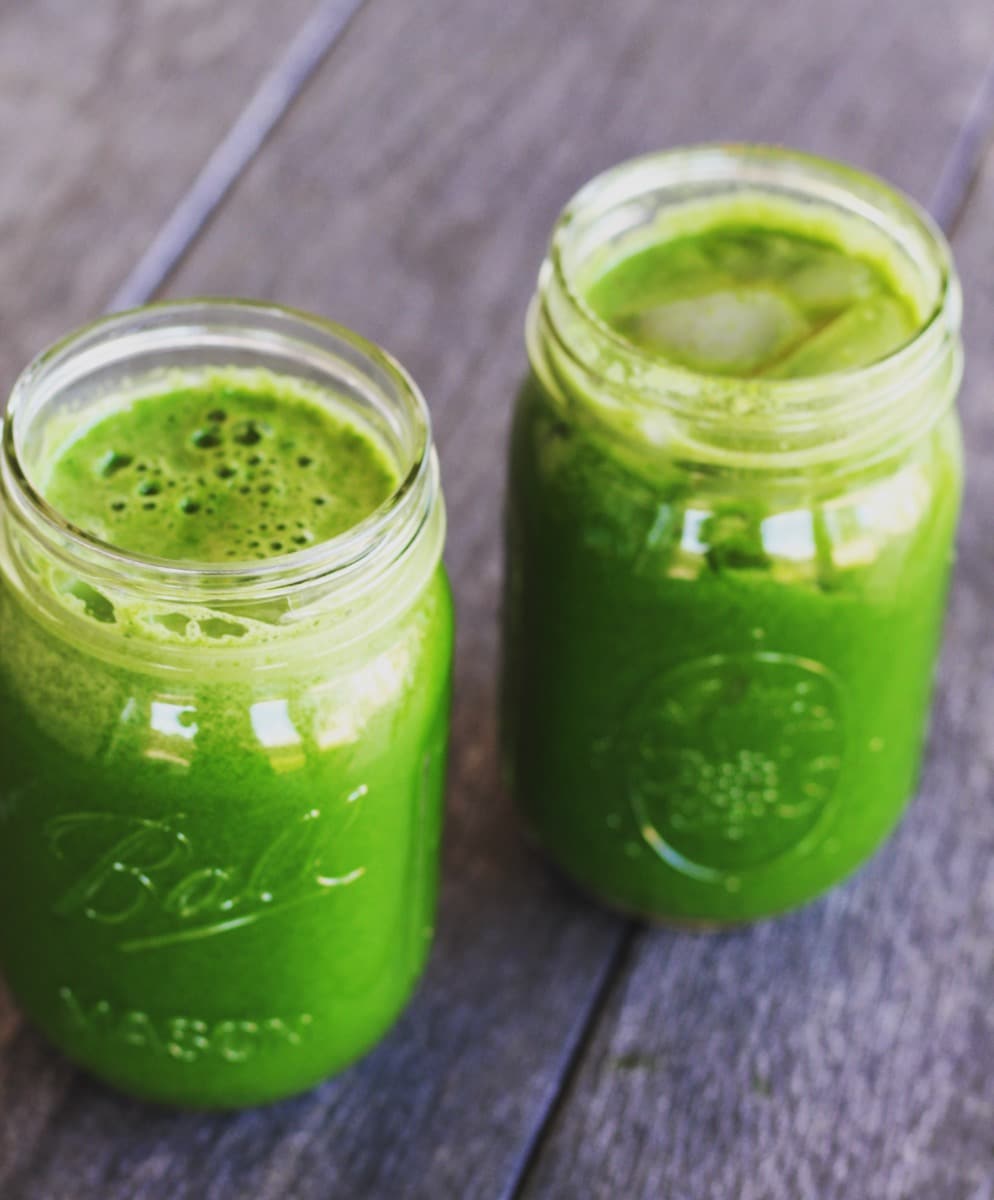
I've received some questions about how I like the juicer so far, and I'd like to share with everyone my thoughts!
1. How dry is the pulp and what do you do with the pulp?
I haven't used other juicers to be able to compare, however, I find the pulp to be impressively dry. Although I did realize the riper the fruit/vegetable, the better the juicer works and the dryer the pulp is. I thought I would feel terrible about throwing away the pulp, but I have had no remorse. Often I use up vegetables that would have otherwise made their way to the trash, so I'm already reducing waste!
2. Do you buy organic or nonorganic?
I use the dirty dozen and sales to guide my shopping. The dirty dozen is produced every year by the Environmental Working Group and identifies the food with the highest level of pesticide residue. Celery is consistently at the top of the list, so I almost always buy that organic. Everything else I buy organic only if there is a good sale going on.
3. Has your grocery bill increased since juicing?
Our grocery bill has increased $10-15 per week. I make 15-20 ounces of juice per day (which I split with Paul), most days of the week.
4. Is it easy to use? How long does it take to make the juice?
One thing I love about this juicer is that there is almost no prep work involved because it has a whole food shoot. Meaning you can fit a whole (small apple) right into the shoot, no cutting required. Usually, I'll put out a clean dish towel and rinse what I am going to use and set it on the towel. That takes five minutes at the most, and another 2 minutes to get it all through the juicer.
One thing I did notice is that it works better with whole fruit then cut up fruit. If I get an apple that is too big and I have to cut it into quarters I find pieces of it in the pulp.
5. Is it easy to clean?
There are a quite a few parts that need to be cleaned/rinsed immediately after use.
Most of the parts are plastic and rinse off with soapy water quickly. The part that spins and grates the produce requires a little more work. It comes with a scrubby brush and most be scrubbed as clean as possible, any residue decreases the juice quantity the next time you use the juicer.
Once a month I still soak it in hot water for 30 minutes for deep cleaning. The entire cleaning process probably takes 10 minutes.
6. Do you use it to make fruit juice or only green juices?
I follow Kris Carr's 3 or even 4:1 vegetable to fruit rule in any juice or smoothie. Just sweet enough to taste, but not like a fruit juice. Following this rule helps to keep the nutrient, antioxidant, and phytochemical count up and the sugar/calorie content down. I also usually add a couple of drops of liquid stevia to Paul's glass.
7. Have I noticed a difference in my health or energy level?
Neither of us noticed any huge change in health or energy level. However, we both like the feeling of starting the day off right with something we know is as good, if not better for our bodies than a multivitamin.
8. What are the benefits/downsides of juicing then?
Benefits: Juicing can easily add 2-3 servings of vegetables/fruit to any diet. It is easier to drink a glass of green juice then attempt to eat a salad at 6 am. Fresh juice consumed within 20 minutes of juicing provides the greatest amount of vitamins, minerals, enzymes, antioxidants, and phytochemicals that are present naturally in the plant.
Downsides: Made with too much fruit it can be too much sugar causing a sharp increase in blood sugar. You also lose fiber in the pulp which helps regulate blood sugar and maintain regularity. Lastly, the time commitment for theBreville Juice Fountain Plus is about 20 minutes from start to finish (including washing vegetables and cleaning the machine.)
Recipes
Daily Green Juice
Most often I include 5 main things in my daily green juice: 4-5 kale leaves, 2-3 celery rods, one large cucumber, and one small apple.
Army Green Juice
On days that I have a long run or hard cardio session I'll sometimes throw in carrots (since they are little richer in carbohydrate than green vegetables). That takes the bright happy green juice to a more of an army green.
Sweet Purple Juice
Throwing a beet in the mix is a extremely messy task as beets are notorious for staining things. However its worth it as a once in a while treat. Different color vegetables each have their own unique sets of health properties, purple is a color often missed. This juice makes up for it, plus beets are naturally sweet so this adds natural sweetness.

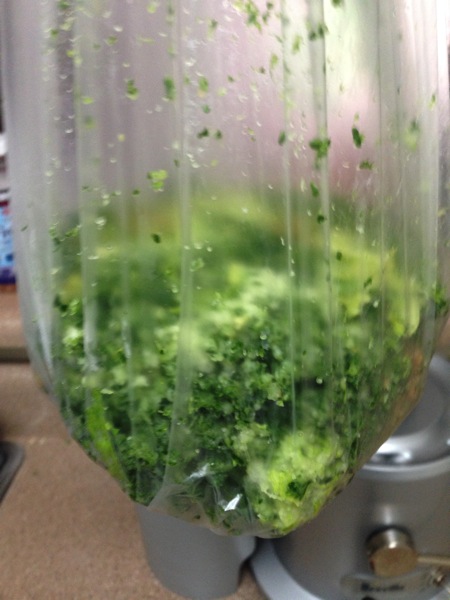

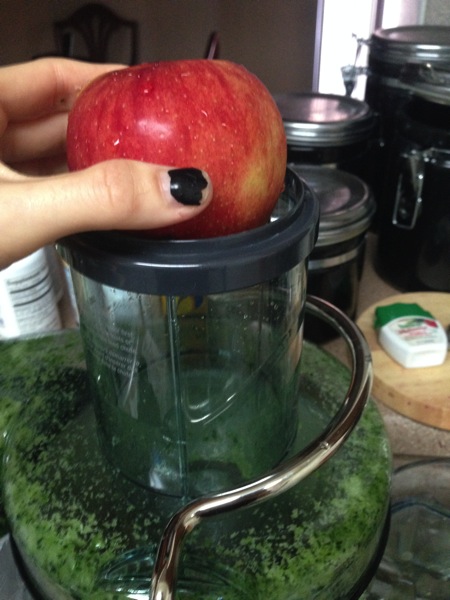

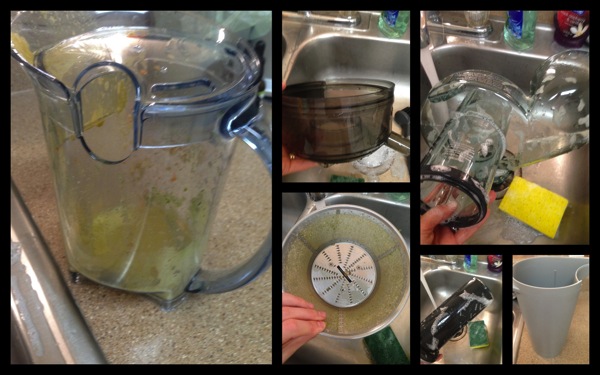




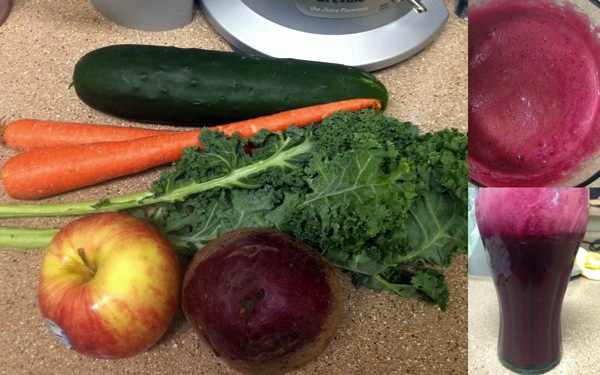

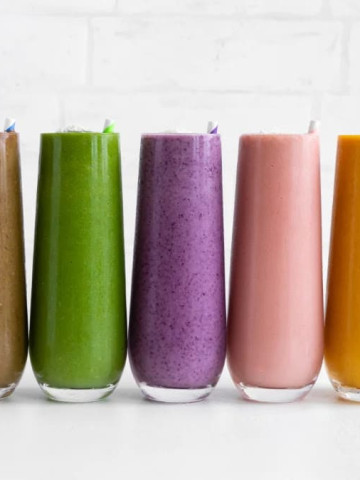


activeharmony says
Great post; thank you!
hungryhobby says
Your welcome!